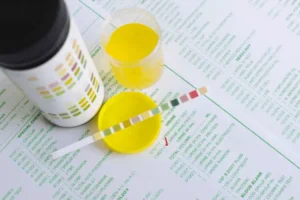We may be paid a fee for marketing or advertising by organizations that can assist with treating people with substance use disorders. Addiction Resource does not offer medical diagnosis, treatment, or advice. Only trained and licensed medical professionals can alcohol poisoning symptoms, causes, complications, and treatment provide such services. If you or anyone you know is undergoing a severe health crisis, call a doctor or 911 immediately. Crack vs coke comparisons highlight false public perceptions about these two equally addictive, dangerous, and fatal illicit substances.
Get Treatment for Your Addiction to Crack or Coke
- In powdered form, this substance is abused by ingesting via the mouth or nasal routes.
- In the 20th century, researchers discovered how to extract the main chemical from the plant, which later became cocaine.
- Or stimulants such as amphetamines, or synthetic opioids, including fentanyl.
- Despite a decline in crack use since its peak, it continues to affect communities, prompting ongoing efforts to combat its distribution and provide addiction treatment.
- This transformation led to the rapid spread of crack use, particularly in urban areas, contributing to the notorious ‘crack epidemic’ of the 1980s.
- Addiction is complex, and treatment requires immediate care as well as a long-term strategy.
It is more difficult to find a ready supplier because of its higher price. The higher price is usually consistent but it isn’t something that most addicts can afford on a regular basis. Coke is derived from the coca plant, which is indigenous to certain areas of South America.
Chemical Differences
Purer forms of crack sink in water or melt at the edges when near a flame (crack vaporizes at 90 °C, 194 °F). Here’s what you need to know about the main differences between crack vs. coke. A treatment center will attempt to verify your health insurance benefits and/or necessary authorizations on your behalf. We cannot guarantee payment or verification eligibility as conveyed by your health insurance provider will be accurate and complete.
Several Factors Make Crack and Cocaine Different From Each Other
The duration of the high from snorting cocaine is longer compared to smoking crack, lasting anywhere from 15 minutes to an hour. Cocaine, often referred to as powdered cocaine or coke, is a stimulant drug derived from the coca plant. Legislation such as the 1986 Anti-Drug Abuse Act imposed severe sentencing disparities, penalizing crack possession 100 times more harshly than powdered cocaine.
Individuals should be placed in a physician-assisted withdrawal management program to help them negotiate withdrawal issues once they stop using cocaine and other drugs. For most individuals, this is best accomplished on an inpatient basis; however, this may not always be possible. The Matrix Model is a strategy that combines a number of treatment approaches. These might include cognitive behavioral therapy, contingency management, 12-step support groups, individual therapy, group therapy, and others. Many people find that using more than one treatment approach can be very effective. Coke has highly addictive properties, so the government has labelled it an illegal substance.
Addictive Potential
This process removes impurities and creates a more concentrated form of the drug. Cocaine, in its powder form, is also classified as a Schedule II controlled substance in the United States. However, the legal penalties for powder cocaine offenses are generally less severe compared to crack. Snorting cocaine involves finely grinding the substance into a powder and then inhaling it through the nose.
That is understandable—cocaine, or “coke,” refers to the powdered form of the drug, while crack is what’s called a “rock,” or more solid, version of cocaine. But there are some notable differences between these two forms of the same drug that prevent them from being interchangeable. Both powder and crack cocaine produce excess amounts of dopamine, a brain chemical that affects how people feel pleasure. The pleasurable effects of powder cocaine can last from 15 to 30 minutes when snorted.
Finding yourself in the midst of addiction can be scary, but Better Addiction Care offers a variety of rehabilitation programs, including options that specifically target cocaine dependency. Additionally, we offer inpatient detox that can be useful in preparing the patient’s body and mind for treatment to come by effectively managing any harmful withdrawal treatment and recovery national institute on drug abuse nida symptoms. Neither crack or cocaine are “safe” drugs and both carry the risk for addiction, overdose, and death. This powdered, water-soluble form of cocaine can be snorted, rubbed on the gums or dissolved in water, and injected directly into the veins. Depending on the route of administration, the effects of cocaine can set in quickly.
If you choose to snort coke, it can cause a runny nose, damage to your sense of smell, and difficulty swallowing over time. Crack vs. coke might not seem like an important difference, but it is. You shouldn’t use them interchangeably, partly because the two have different dosages and can affect you differently when you use them. Crack is also sold at prices low enough that even teenagers can afford to buy it, at least at first, until the money runs out.
This is why you have a higher chance of overdosing the longer you use the drug. Cocaine is a powdered stimulant derived from the leaves of the coca plant. The leaves are processed to extract the active ingredient, which is then purified and turned into a white powder. Cocaine is most commonly snorted, although it can also be smoked or injected. Understanding the differences in composition and form between crack and cocaine provides insight into how these substances are used and the potential impact they can have on the body. To comprehend the key differences between crack and cocaine, it is essential to understand what each substance is and how they differ from one another.
In powdered form, this substance is abused by ingesting via the mouth or nasal routes. On the other hand, crack is also cocaine except that it uses its freebase form and is made into a preparation that resembles white rocks. In 2017, the National Drug Threat Assessment reported that at the time the estimated cocaine production was at the highest level clindamycin hcl oral ever reported. At Casa Palmera, our goal is to aid you in a comprehensive spiritual, physical, and emotional recovery. We offer treatment for chemical dependencies such as cocaine addiction, drug addiction and alcoholism. It is extremely important to us that you receive the highest quality medical care from our qualified staff during your stay.
Crack cocaine is often less pure than powdered cocaine due to the manufacturing process, which can introduce impurities and additives. Historically, there has been a disparity in legal consequences between crack and powder cocaine. The Anti-Drug Abuse Act of 1986 initially established a 100-to-1 sentencing ratio, which was later reduced to 18-to-1.
That’s one of the biggest differences between crack vs. coke, so people need to know that the different forms of these drugs have different penalties if you get caught. While less common, individuals may also choose to administer cocaine rectally (known as plugging), orally, or through inhalation of cocaine vapors. These methods may have varying effects and risks, but they are generally considered less prevalent than smoking and snorting. To fully comprehend the differences between crack and cocaine, it’s important to first understand what cocaine is and the various forms it can take. This substance is made by mixing pure cocaine with a variety of other substances and chemicals.
This stereotype contributed to a cycle of suspicion and discrimination, adversely affecting the educational and social treatment of Black youth. Longitudinal studies later debunked this myth, attributing observed symptoms more closely to premature birth rather than direct cocaine exposure. It’s essential to differentiate between cocaine and coca leaves or the coca plant, as legal statuses can vary significantly by region. This distinction is crucial as it impacts enforcement and regulatory approaches in different parts of the world.






